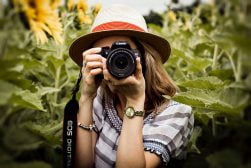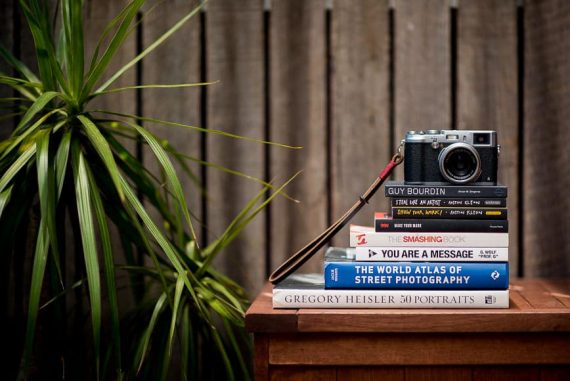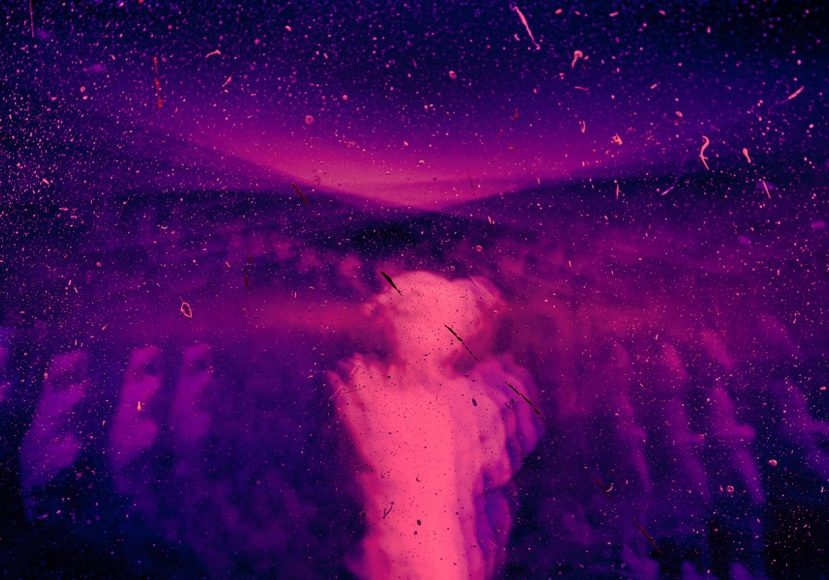
Guide to Surreal Photography
Discover the intriguing art of surrealism in photography. Learn 9 techniques to create mysterious images at home today + check out 7 surreal artists to follow.
Learn | Photography Guides | By Ana Mireles
What do you think when you hear the word surreal? You probably associate it with something odd or unnatural. If you’re an art lover, you may think of Dali’s melting clocks – but did you know it’s a thriving photographic genre?
Surreal photography has been a part of the movement since the beginning, and it’s still very much alive. In this guide, you’ll find different ways to do surreal images at home or in everyday life.
Alongside the techniques, you’ll find some surreal photography examples to inspire your own imagination.
If you want to explore the dream world of surrealism, you’ll also find some suggestions on contemporary photographers to follow on Instagram.
If you’re ready to leave reality behind, let’s get started.
Table of Contents
What is Surreal Photography & Surrealism?
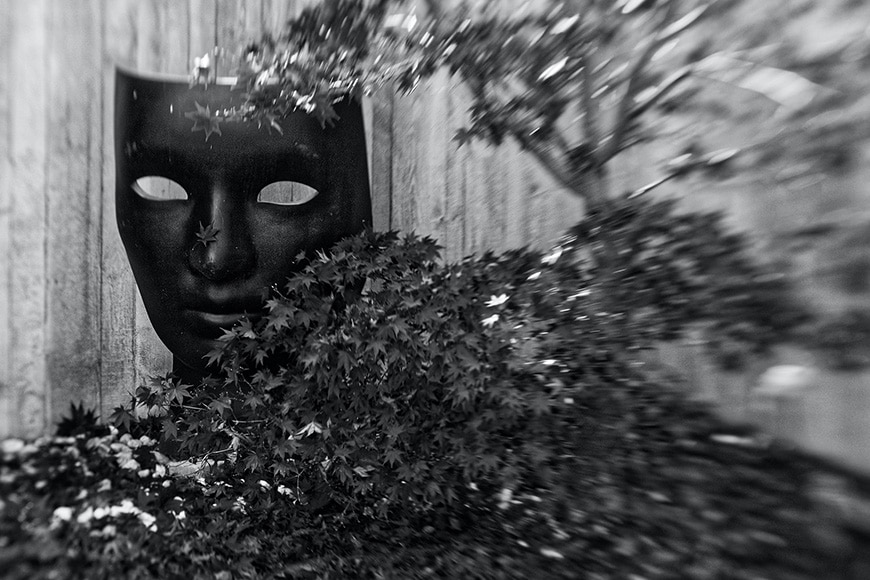
Credit: Miro Polca
Surrealism is an art movement that started in 1917 but consolidated in 1924 when two rival groups claimed to be the founders and wrote their manifestos.
One was by Yvan Goll, and the other one (which became the most famous) was by Andre Breton – who later wrote another two.
Even though painting is one of the most well-known expressions, surrealism influenced all other media – sculpture, cinema, literature, and photography.
The idea of surrealism is to give free rein to the mind, bypassing rationality. The concept of the unconscious is fundamental and dreams play a big role.
Some of the earliest surreal photographers were Man Ray, Hannah Hoch and Hans Bellmer. They used multiple darkroom techniques to create such photographs.
For example, the Sabattier effect – created by briefly exposing a partially developed film to light; or photograms that are photographic images made without a camera.
If you want to try surreal photography without a darkroom, here are some techniques that you can use in film or digital.
Some are done in-camera, others require some production and others post-production. Find the one that helps you to express your inner nature and give it a try.
9 Surreal Photography Techniques
How do you make a surrealist picture? Here are a handful of tips and techniques that you can use as inspiration to bring some exciting and mind-bending surreal photography ideas to life.
1. Photo composite
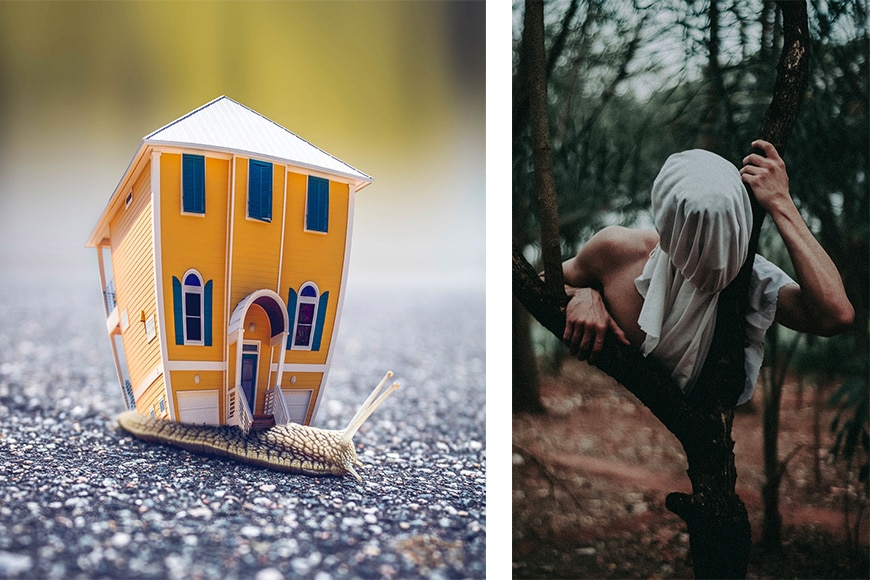
Credit: Sarah Trummer / Asaph Guedes
Since the surreal often shows things that don’t exist in real life, photo compositing is a well-known technique in surreal digital photography.
Photoshop is a great software to make photo composites – however, you can use any program that allows you to work with layers.
Here are some examples of surreal photography using photo compositing:
- Visual metaphors: This technique allows you to play with the different meanings and connotations of the represented objects. For example, substituting a snail’s shell with a house because the shell is what protects it from the environment.
- Fantasy photography: With this type of photography, you can create fictional worlds and characters that aren’t bound by the rules of the real world.
- Pop-out photos: In this type of composite, you can blend two realities into one. For example, you can make an image where someone is reading a book and characters from the story are popping out of the pages. Or, you can photograph a wall with hanging pictures, and the people from the portraits are coming out of the frame.
2. Multiple exposures
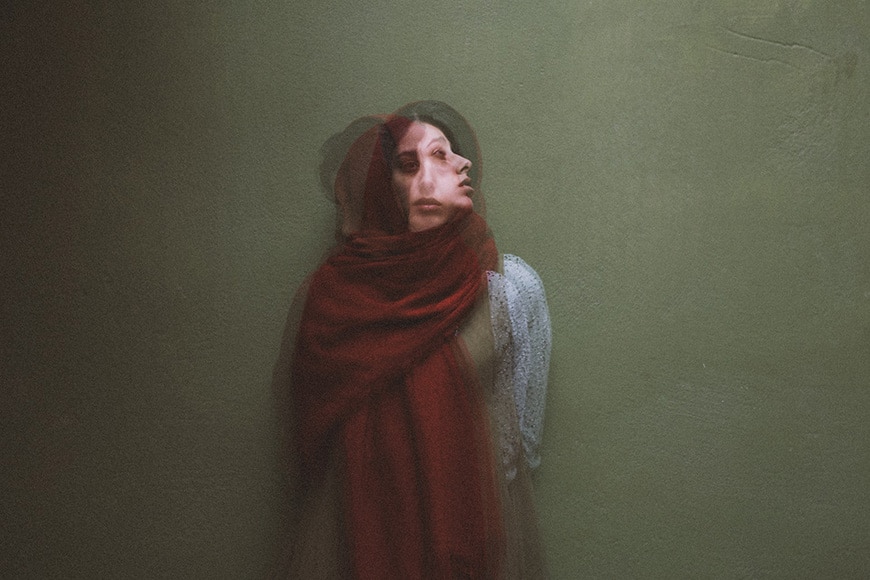
Credit: Foad Roshan
Working with layers in Photoshop, you can also mimic a multiple exposure photography technique. Unlike photo composites, with multiple exposures, you can experiment with blending modes and opacity levels.
However, if you’re looking for surreal photography ideas without Photoshop, you can do multiple exposures in-camera. Actually, that’s how the technique started in the days of film photography.
If the camera was completely manual, you could expose the same frame multiple times. If it automatically changed the frame after you pressed the shutter, you could expose the entire roll, then load it again and make a second exposure on each frame.
Many digital cameras have this feature included – it has the added advantage that you can see the first image on the LCD screen, allowing you to compose the second exposure better.
Check out our guide to double exposures.
3. Levitation photography
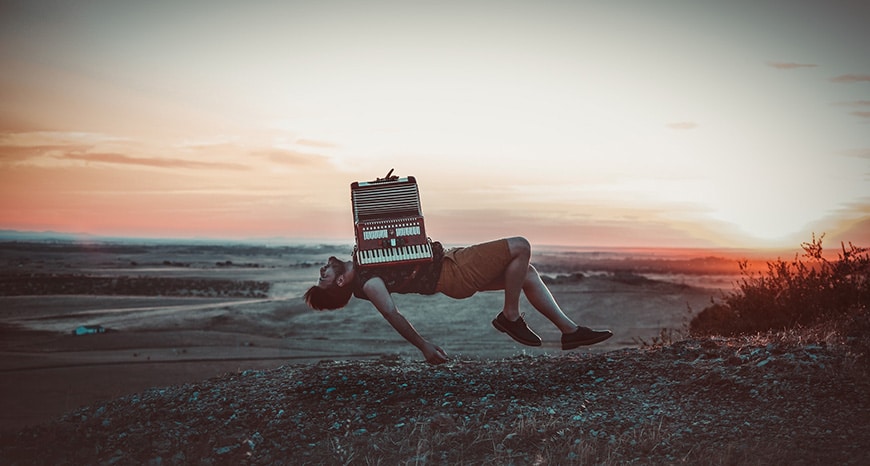
Credit: Javier Penas
This is another surreal photography technique that can be done with or without Photoshop – of course, with Photoshop, you can do more complex scenes.
Although, there are some wonderful exceptions. For example, you can look at Philippe Halsman’s work and his ‘Jumpology’. A famous example is his portrait of Salvador Dali with three flying cats.
If you want to do levitation without compositing, you need to use a fast shutter speed – use burst mode to make sure you capture the best moment.
Then, throw the object in the air (or ask the model to jump if you’re doing a portrait) and start shooting.
This way, you’ll freeze your subject in the air as if it was flying or levitating.
Otherwise, put the ‘flying object’ on a stand and photograph it. Then, take it off the stand and take a picture of the background using the same camera settings.
Afterwards, compose both images in Photoshop, masking out the stand.
Learn more in our guide to levitation photography.
4. Photo production
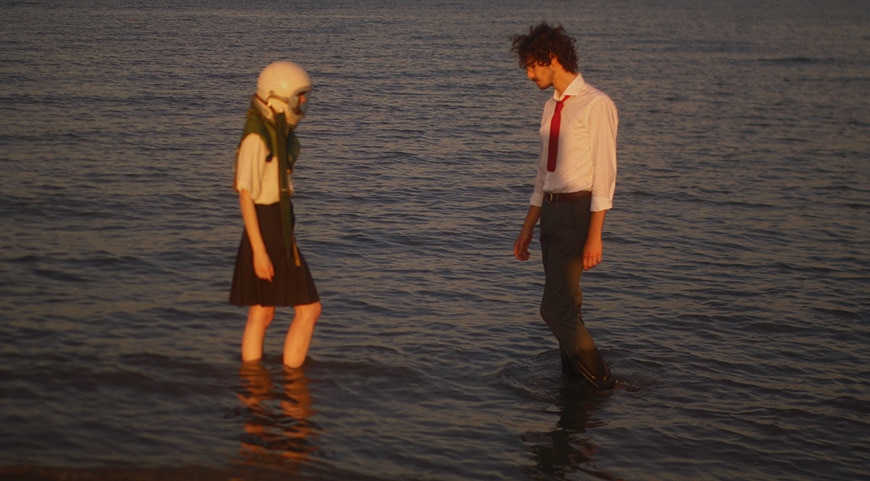
Credit: Elia Pellegrini
Photo-production is the process of creating a photo from the original idea until the final result. When done professionally, it involves many specialized professionals from managers and art directors to make-up artists, etc. However, you can do some of it yourself.
The idea is that you find the right location or build a set to tell the story of your photo, cast the right models and choose props, wardrobe and make-up.
Then, of course, you need the right light and equipment to make your photo the way you envisioned it. You can include some photo editing and retouching as part of post-production, or you can leave the photo as you took it.
5. Put things out of their element
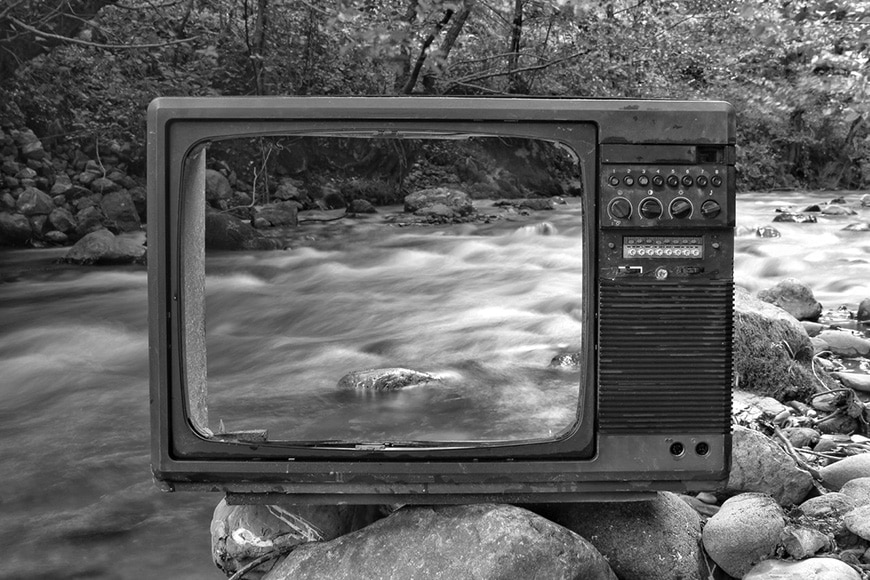
Credit: Photography Maghradze
Unusual elements in a setting can be disruptive enough to challenge reality. This can make the viewer think of a story where this placement makes sense or find other meanings and uses for a given object.
Usually, using juxtaposition and contrast is very effective in surreal photography.
For some amazing examples, you can see the work of Platon Yurich. In his surreal photos, you can find a bus stop in the seashore; or stairs coming out of a lake and leading up to nowhere.
Here are some more examples of juxtaposition.
6. Challenge logic by changing perspective
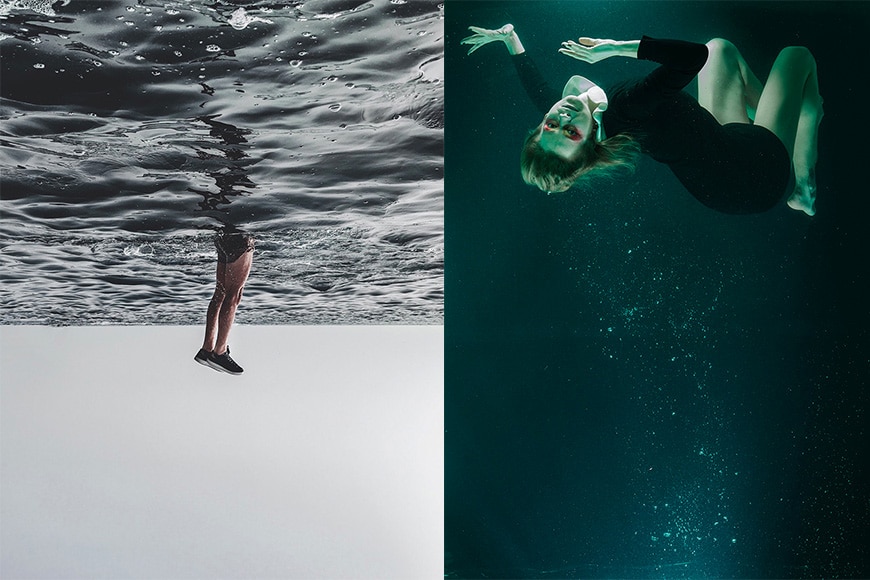
Credit: Anouar Olh / Engin Akyurt
The whole concept of surrealism is to contest rationality, so things that aren’t logical or challenge preconceived ideas work well in surreal photography.
Changing your perspective can be an easy way to look at things in a different way and spark the viewer’s imagination.
Here’s our guide to using perspective in photography.
7. Use reflections
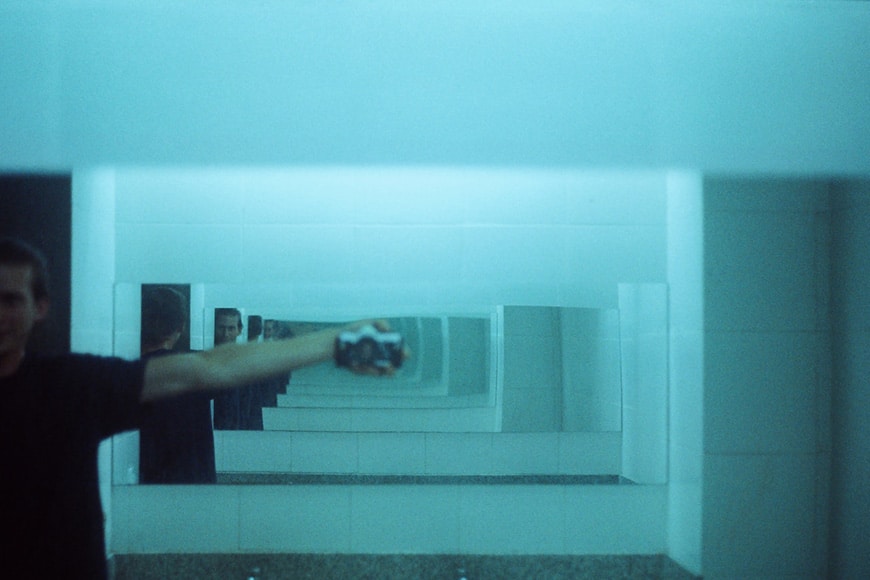
Credit: Lucas Craig
Reflections are great to make surreal photos because what you see is not what’s there – it’s a mirrored version of what is behind you mixed with what you have in front.
You can multiply things or experiment with how they are reflected by changing the reflective surface. Move the light to achieve the desired effect.
Learn more in our guide to reflections.
8. Motion Blur
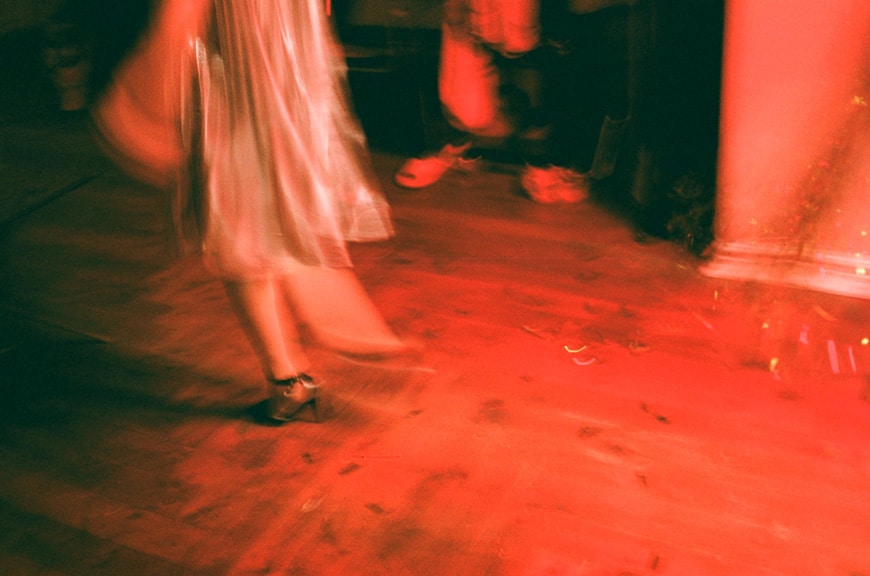
Credit: Inga Seliverstova
Another way to make surrealistic images is by using motion blur. You can do this when you have moving objects.
As a result, everything that moved while the shutter was open will leave a trial – creating a dreamlike effect.
Alternatively, you can move the camera while you take the photo. Either way, you need to use a slow shutter speed to capture motion.
The right shutter speed will depend on the speed of the moving subject and the amount of blur that you want.
Here’s our guide to capturing motion blur.
9. How to edit surreal photography
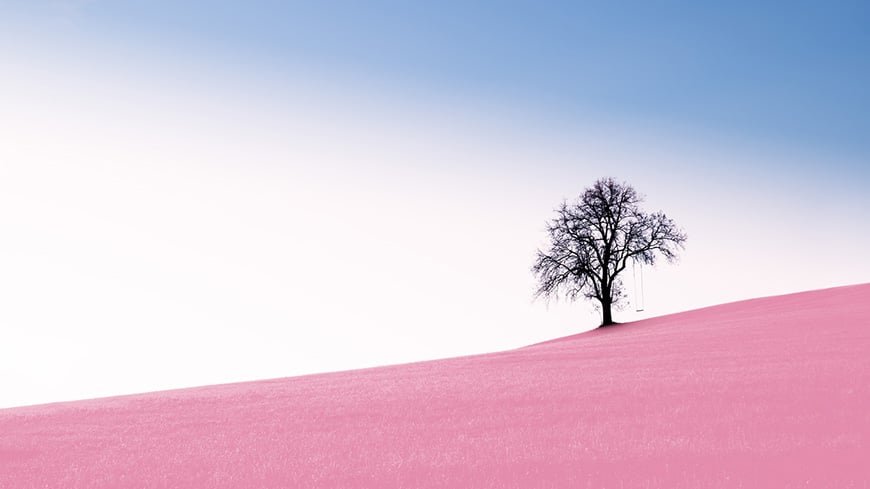
Credit: Simon Berger
In photo editing, you normally try to keep things as close as possible to the way they were when you photographed them.
You correct the white balance to match the light, adjust the colors to make them pop while still look realistic, and so on.
When you’re editing surreal images, you don’t need to consider how things were when you took the shot, but how they are in your mind.
You have total freedom to change the colors, for example – in a surreal photo, the sky can be red, or the trees can be blue.
Also, you can distort lines, turn the photo upside down, or anything else you want to create bizarre situations that are believable yet unreal – like they are in a dream.
7 Surreal Photography Artists to Follow in 2023
Here’s a selection of surrealist photographers who are producing some amazing work.
Make sure you track them down on Instagram and see all the wonderful examples of surreal photography being produced.
- Monica Carvalho – @mofart_photomontages – Using photo collages, she unites seemingly unrelated things that look alike to create strange juxtapositions.
- Bara Prasilova – @bara_prasilova – She’s part of the Hasselblad Heroines. She approaches serious topics with humour and absurdity through her conceptual and surreal images.
- Joel Robinson – @joelrobinson – He uses digital photography and composites to create imaginary situations like flying on the back of a bee or having lunch on a cloud with a friend giraffe.
- Aydin Büyüktas – @aydinbuyuktas – You can see the world twist through his photograph to experience it as you’ve never done before.
- Lara Zankoul – @larazankoul – She recreates everyday scenes with surreal creations that invite the viewer to come up with their own interpretation.
- Kyle Thompson – @kylejthompson – He mostly takes self-portraits in a story without a beginning or an end.
- Brooke Shaden – @brookeshaden – She uses surreal portraits to explore the light and darkness in people – often, the subject of such images is herself.
Final Words
Surreal photography can be a fun, meaningful and rewarding pursuit. It’s really a way to let your creativity run wild.
Now that you know some surreal photography techniques, it’s time to let your unconscious take over your camera. Let us know how it goes, and leave any comments or questions below.





